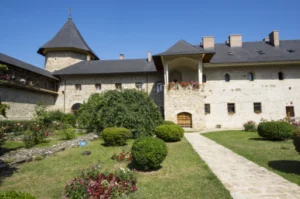San Antonio’s Green Line Set to Transform Local Transit
San Antonio is gearing up for some exciting changes in the way residents and visitors navigate the city. With plans underway for a significant overhaul of San Pedro Avenue, VIA Metropolitan Transit is bringing a brand new bus rapid transit system known as the Green Line. This ambitious project, which comes with a hefty price tag of $466 million, aims to create a more efficient and reliable public transit option for everyone.
What’s the Green Line All About?
The Green Line will span approximately 10.4 miles, beginning at the site of the vacant Lone Star Brewery near Interstate 10 and stretching all the way to San Antonio International Airport north of Loop 410. VIA has pledged to have buses running every 10 minutes on weekdays, a significant improvement over the existing service, which only sees buses on San Pedro’s Route 4 about every 20 minutes. The anticipation is that this increased frequency will entice more San Antonians and visitors to leave their cars at home and hop aboard.
VIA’s leadership is hopeful this will ease the city’s traffic woes. “Many of our current riders use the bus out of necessity,” a VIA representative mentioned. “With more reliable service, we think more people will choose the bus instead of driving.” This change isn’t just about convenience; it’s also about creating a greener, more sustainable transportation system.
Concerns from the Community
However, not everyone is thrilled about the upcoming changes. Some residents in the adjoining neighborhoods of Monte Vista and Alta Vista are voicing their concerns. They worry that reducing lanes available for cars will create chaos, prompting vehicles to seek alternate routes through their quiet side streets during peak hours or school dismissals.
Pat DiGiovanni, a member of the Monte Vista Historical Association, expressed his worries about preserving the neighborhood’s peacefulness, stating, “We’re talking about human behavior and people’s unwillingness to sit in traffic.” These sentiments resonate with those who love the charm and tranquility of the area, effectively showcasing a dynamic between progress and preservation.
Transit-Oriented Development Raises Eyebrows
Adding a layer of complexity to the situation is the city’s aim to reform its zoning code for transit-oriented development. This move is intended to inspire denser constructions along the Green Line and its sister project, the Silver Line, which will span east-west through the city. While the city has had zoning for transit-oriented development since 2001, it has only been utilized three times, mainly due to its confusion.
City officials are now focused on simplifying the code and ensuring it is more user-friendly, hoping to strike a balance between growth and maintaining neighborhood integrity. Changes could limit building heights and adjust parking requirements, which have become hot topics among local residents. Catherine Hernandez, director of the city’s Transportation Department, acknowledged this complexity but also pointed to issues like over-parking in many commercial areas.
Community Opinions are Mixed
The reactions from Monte Vista residents have been surprisingly varied. While some applaud the potential for more public transit options, others express fears about increased congestion and changes that could come with new development. Many residents see the need for dependable alternatives to car-centric travel, yet worry their beloved schools and neighborhoods might not be prioritized adequately in this transition.
Supporters like Erin Zayko, president of the Monte Vista Neighborhood Association, believe that the discussion is crucial. “We support multimodal transportation, but not at the expense of the safety of the neighborhood,” she reflected, showcasing that while the future is promising, it does come with challenges.
A Glimpse into the Future
Construction for the Green Line is set to kick off in March, with plans underway for 26 bus stations. VIA officials have already begun to engage with neighborhood feedback, ensuring that designs address concerns while also enhancing transportation efficiency.
As the city embraces new public transit methods like the Green Line, it remains to be seen how residents will adapt to these upcoming changes. Will the Green Line alleviate congestion? Will it really encourage people to swap their cars for buses? Only time will tell, but one thing’s for sure — San Antonio is on the verge of a transit revolution, and everyone is eager to see how it unfolds.
In summary, remains a blend of excitement and concern as communities look ahead to the Green Line. As San Antonio embarks on this new journey, the focus remains on creating a transit system that works not just for the city, but also for those who call it home.








